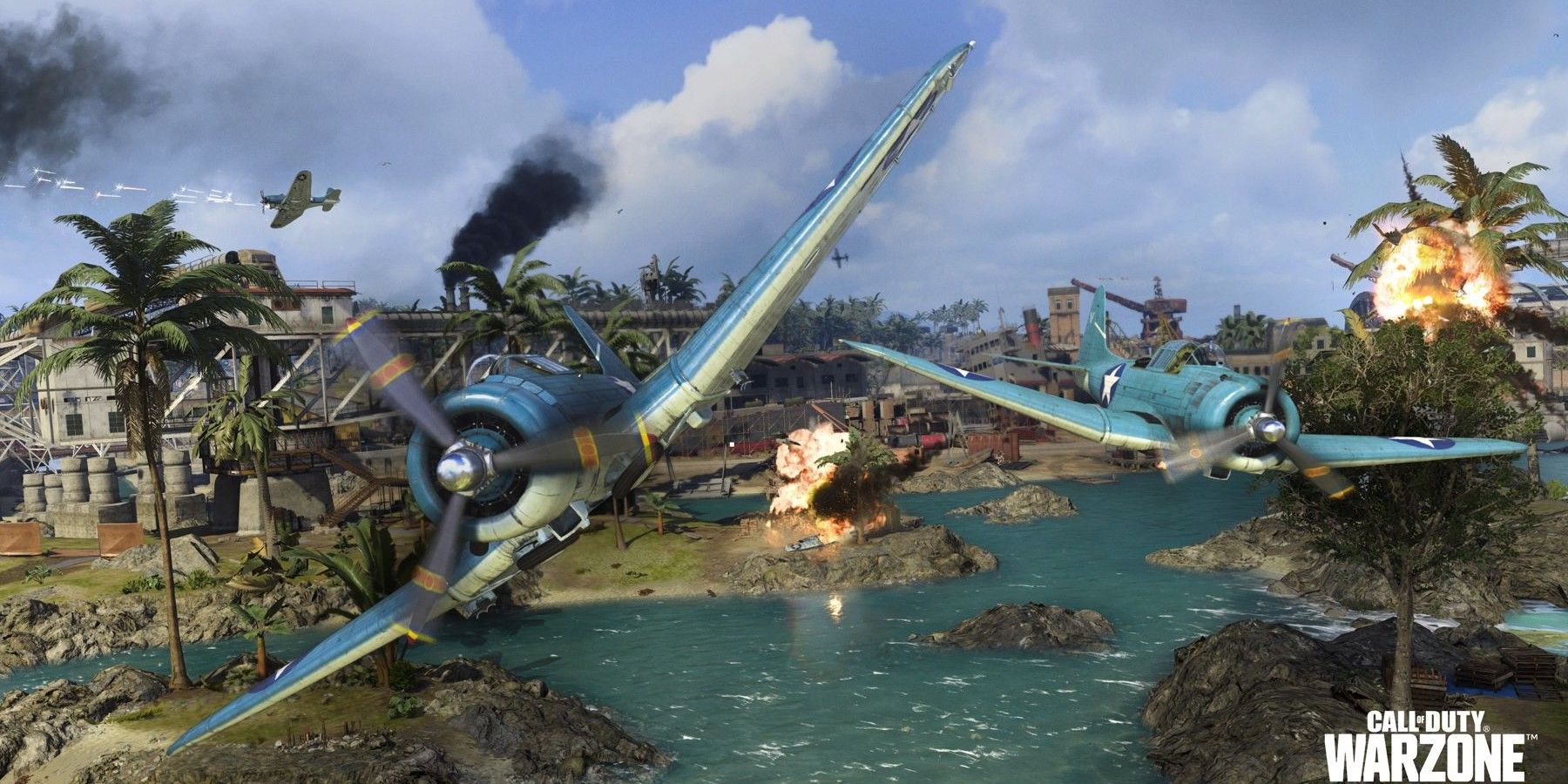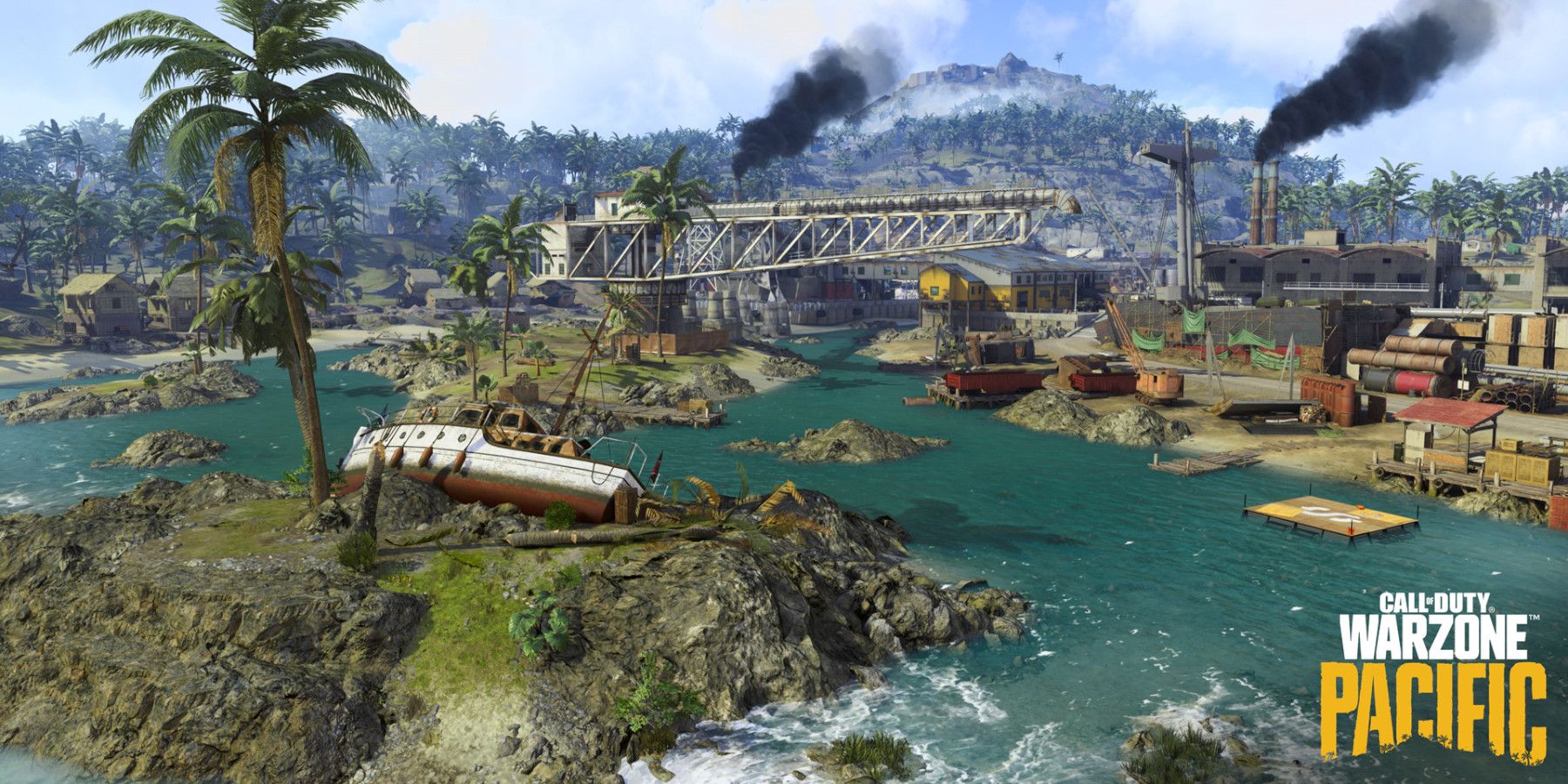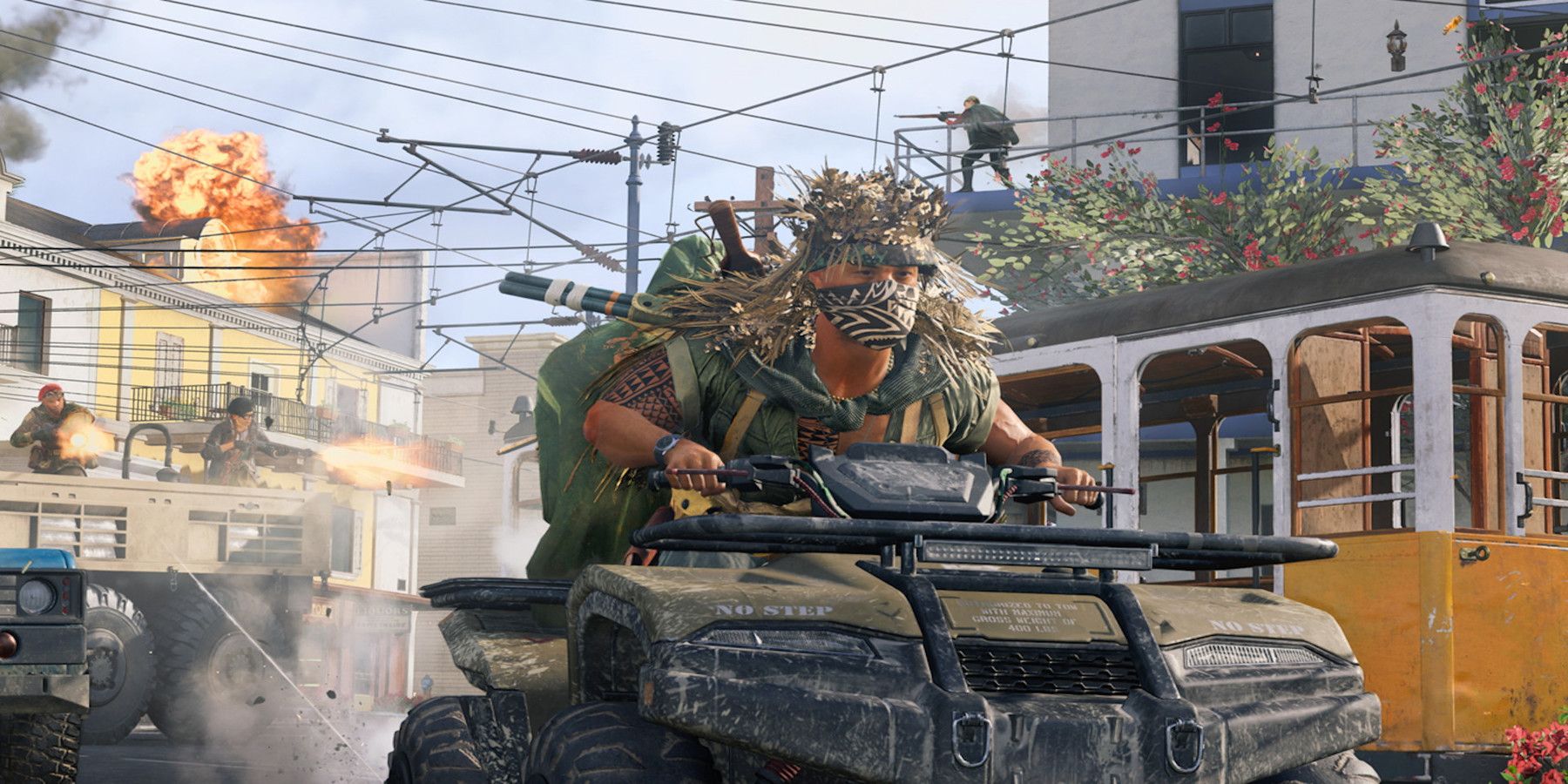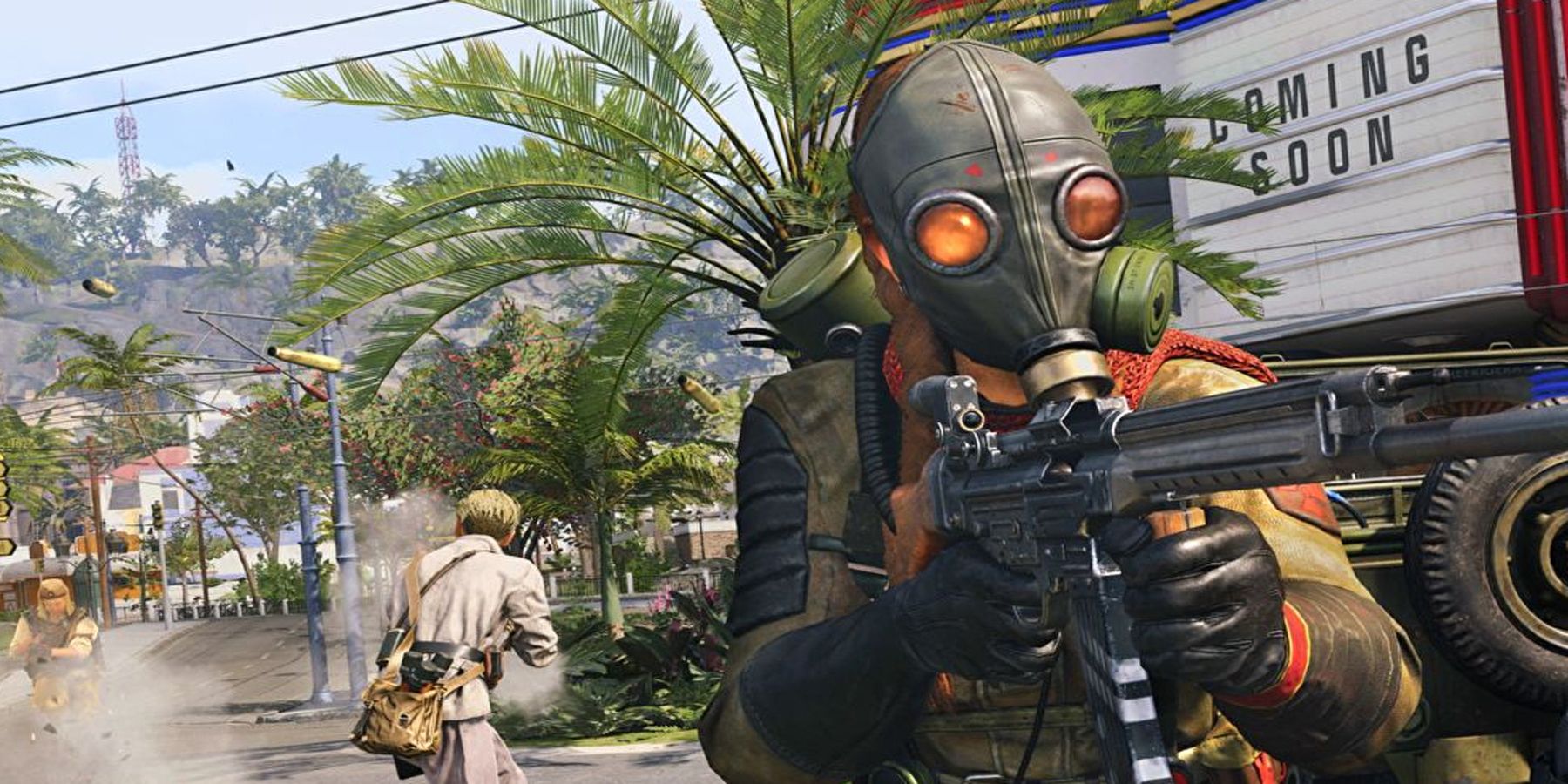A few years ago, Fortnite and PUBG were the biggest names in the battle royale genre, and only had each other's competition to worry about. Now, in 2022, it seems as though a new battle royale game is around every corner. Fortnite may still hold the crown, but Apex Legends, PUBG, and now Call of Duty: Warzone are all vying for gamers' attention.
While it may have gotten off to a great start just under two years ago, Call of Duty: Warzone has lost some of its original luster. A game once revered for its tight shooting mechanics, careful weapon balancing, and large-scale map, Warzone is now the subject of widespread criticism, with many long-time fans pointing to the game's lack of events, meaningful updates, and inconsistent balancing as being the reason behind increasing player drop-off rates. As quite a few fans have pointed out, it might be time for Activision to cut its losses, and start again.
Warzone: Caldera Is Just Not Cutting It
One of Warzone's most prominent criticisms was the lack of a new map, or changes to the existing one. While Fortnite has had the same map since launch, the game is constantly changing the look and functionality of areas to keep them fresh and exciting for long-time players. Warzone, on the other hand, only added superficial content to its original Verdansk map, with just a few bunkers and silos being added, along with a visual overhaul a few months later to make environments look as though they were constructed in the 1980s.
So it's fair to say that when Activision finally announced a new map, releasing in the then-upcoming "Pacific" update coinciding with Call of Duty: Vanguard's first season, fans rejoiced. The new Warzone map was said to be even bigger, better, and brighter than Verdansk, offering genuine variety in terms of points of interest and visual design.
Caldera, as it was soon named, released in early December, and was immediately met with fan outcry and widespread disappointment. For a start, glitches and bugs were rampant at launch, with PC players reporting consistent server crashes, invisible walls spawning seemingly at random, and a whole host of UI issues plaguing everyone.
Caldera's launch was far from ideal, but the issues didn't end there. Over the last few weeks, fans of Verdansk have taken to social media to explain why they're disappointed with the new map. Many have pointed out that, while on the surface the map ticks all the boxes for what players were asking for, the game is more unbalanced than ever. Call of Duty: Vanguard's weapons either being way too powerful when compared to Modern Warfare and Cold War's selection, or being so underpowered that they have no use at all.
Regardless of a player's own personal preference, Caldera is an undeniable disappointment, and hasn't offered the reinvigoration that many fans thought it was going to achieve.
A Next-Gen Release Is Absolutely Necessary Now
A great deal of Warzone's fairly large player count is attributable to the game's widespread availability, being available on essentially every platform but Switch and Mobile. However, that does come at a pretty significant cost to the experience for many players.
Those playing Warzone on next-gen consoles and high-end PCs can spot Warzone's technical faults from a mile away. Lobbies take a long time to load, frame rate issues are consistent, and the draw distance is laughably bad for a modern AAA game. Although Activision has repeatedly promised that a native next-gen version of the game is in the works, there's been no release date news thus far, and fans aren't too hopeful that it'll arrive anytime soon.
Warzone's lack of a native next-gen release is only making the game's issues more prominent, with new hardware shining a glaring light on every bug, glitch, and technical misstep. Caldera certainly isn't a terrible battle royale map, but the technical issues, especially when using next-gen hardware, are hard to gloss over, and the more frustrated players are getting, the less likely they are to come back.
Making Warzone a Separate Game Would Help With Balancing
Aside from its current vast array of bugs and glitches, one of Call of Duty: Warzone's major frustrations is the lack of balancing. As mentioned in a previous section, the new Caldera map brought Call of Duty: Vanguard's WW2 weapons to the game. At this point, Warzone now has three full games' worth of weapons packed in to one experience. On paper, this is every Call of Duty fans' dream, with a staggering selection of series favorites to choose from and swap between on the fly. In reality, it's a bit of a nightmare.
Most AAA multiplayer shooters have a primary weapon selection of around the 25 mark, with some CoD titles going up to 30, and titles like Halo Infinite landing on the lower end of the range at 22. Even with the most modest range of weapons, balancing is always an incredibly complex issue. A developer has to spend countless hours intricately tweaking minute aspects of a weapon's damage, rate of fire, stability, accuracy, and more, just to make sure that it functions in the game's ecosystem as intended. And this process is never really finished, with constant updates and hot-fixes being added to the game post-launch.
Call of Duty: Warzone currently has 119 primary weapons. For reference, Modern Warfare alone had 29. Over the course of Warzone's life, new weapon metas have become an almost-daily occurrence. With weapon attachments, this balancing act gets even more difficult. It's no wonder, then, that players are starting to feel as though the game is a little unfair.
The fix for this lack of balance might be somewhat drastic, but it seems to be the only logical solution at this point; Warzone should be scrapped, and a standalone Warzone sequel should be developed. With all the bugs, Caldera's lackluster introduction, and the game's severe balancing issues, making a brand new Warzone that doesn't have to tie-in with mainline releases seems like the smart move to make.
This way, Activision could focus on a small selection of weapons, ensuring that they're balanced. Activision could also create or transition one or more studios to solely work on a potential new Warzone, giving the development team more time to stamp out bugs. At this stage, Warzone seems like a sinking ship, so it might be time to jump off, swim to shore, and build a new one. That $70 billion has to go somewhere.
Call of Duty: Warzone is available now on PC, PS4, and Xbox One.




